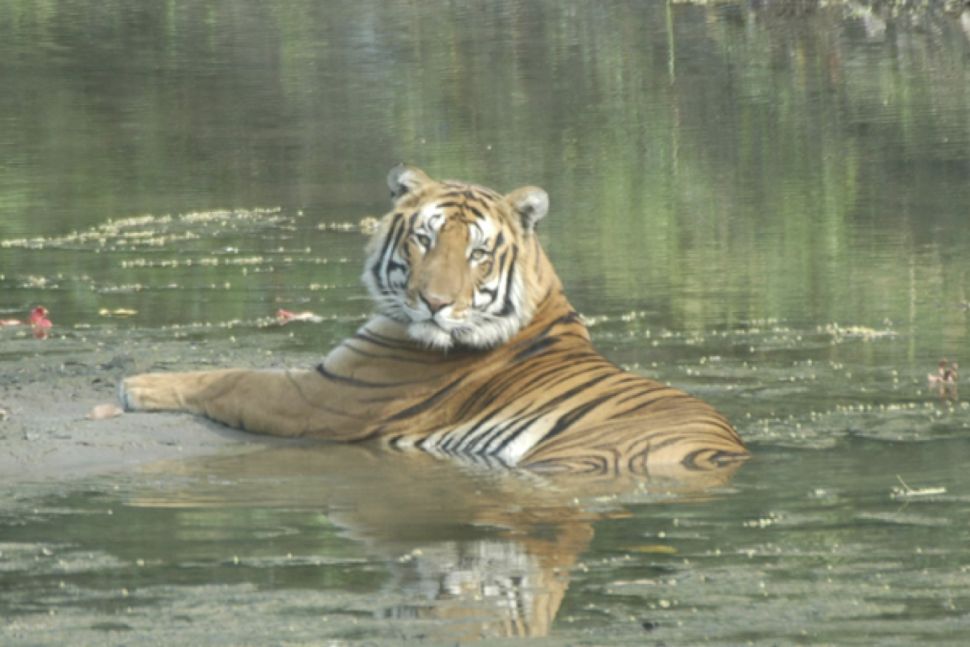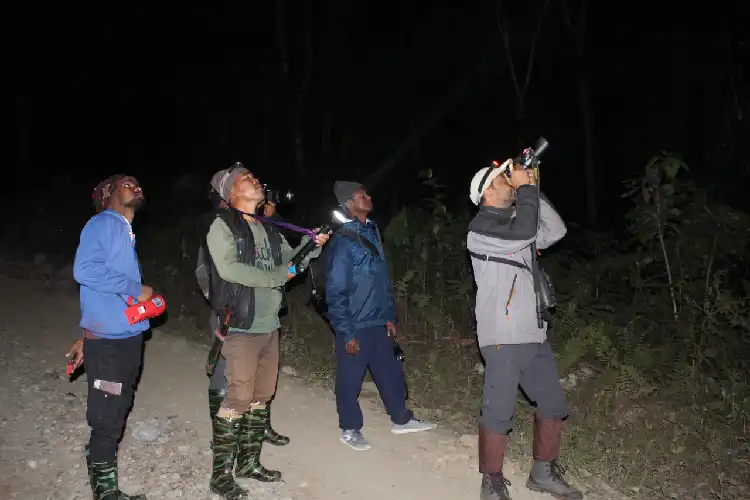Firoz Ahmed tracks Tiger in the Northeast
Daulat Rahman/Guwahati
It will not be an exaggeration to say that Mohammad Firoz Ahmed loves to live with tigers. It is his passion to embrace the danger of finding out tigers in deep forest and taking their pictures. Wildlife biologist Mohammad Firoz Ahmed from the North East is one of the internationally acclaimed tiger experts in India. He hogged the limelight when his camera clicked a full grown tiger resting in water in Kaziranga National Park in 2010. Later he discovered that the national park had the highest density of tigers per hundred square km in India.
Firoz has been a part of the tiger census teams in various tiger inhabiting forests of the North East including the Kaziranga National Park. He led the intricate camera trapping exercise in Kaziranga from 2008-2013 and thereafter it is being carried out by the park management at regular intervals. He also monitored tigers in Orang and Manas National Park since 2007 & 2010 respectively.
Besides many stories of challenges and danger Firoz had experienced several times when he was chased by rhinos during his tiger tracking mission.
Searching for Tiger: Mohammad Firoz Ahmed on the mission
In an interview with Awaz-the Voice Firoz said monitoring tigers in Kaziranga is full of challenges and most importantly one needs to understand as how a tiger behaves. While implementing camera trap, one has to think like a tiger to ensure that the tiger will walk on that path which can trigger a camera, he said.
“The most crucial challenge in Kaziranga, as well as in other areas is that the presence of dangerous animals where we often walk to fix a camera. At times we walk through the tunnel of tall grasses created by rhino or buffalo and end up coming out on the opening of a wetland at the other end. While approaching the other end, we do not see anything but the end of the tunnel and this is the point of high risk as we may come in front of a rhino or a buffalo or a herd of elephants.
However, such challenge became celebration in 2009 when we could ascertain that Kaziranga had the highest density of tiger per hundred square km. No one could believe that Kaziranga has such high number of tigers before and it was a history,” Firoz said. He, however, admitted that the difficult task was made easy by many experienced staff of Kaziranga.
Firoz and his team members had carried out an extensive camera trapping exercise in Namdapha National Park in Arunachal Pradesh in 2012. Namdapha was certainly the most challenging assignment that Firoz’s team accepted and successfully completed.
As many knows that Namdapha is part of the Aarakan and Patkai hill range and only way is to walk across the series of hills to reach from one point to another. Often the hills are steep and without any path to walk around. That implies that one has to create his own trail. Firoz and his team members had carried out extensive planning with advanced 3D imagery freely available on Google earth and created their possible routes to walk and achieve maximum number of trap fixing.
At Namdapha too Firoz and his team members were helped by few amazing frontline forest staff who had good knowledge of the areas and many guides and porters from nearby villages belonging to Chakma and Lishu community.
 The Tigress who made Firoz Ahmed famous
The Tigress who made Firoz Ahmed famous
“Learning about forest and life within has no end when learners want to walk with them! We also met some poachers during our work who destroyed our camera traps. It was a challenging field work for three months and finally were rewarded with the first ever camera trapped tiger image from Namdapha as tiger remained elusive in the beautiful dense rain forests there,” Firoz said.
Elaborating his camera trapping experience Firoz said tigers do not like to be photographed in the forest when they walk on the trail without any fear. However, they (tigers) have acute sense of their forest just like human beings do have about our home.
“They (tigers) perhaps can detect minor changes in surroundings and obvious smell of us from our sweat that we leave behind at a spot when fixing a camera trap.
Also Read: Amjad Ali Khan, Subhalakshmi follow humanism
However, dominant male or female tigers are least bothered about a camera while young and sub adults are more worried. The flash often stomped them. They remember that bitterness and then start avoiding the trap location which we call trap avoidance. But to count them we need to be smarter, so we often replace the trap location to a nearby area and a new trail nearby and snap them again. We need many pictures of a tiger and most tigers of an area to estimate their population in the forest area. So, we finally manage that by tricking the tiger,” Firoz said.
Firoz is happy with the current number of tigers in the few tiger protected areas of the State.
“The trend of tiger population is increasing. It might double in the next 15-20 years provided management of the forests is strengthened in areas where opportunity of increasing the number is high, like Manas Tiger Reserve. In fact, tiger number in Manas National Park has increased from 10 to 44 in last 10 years and will double if not triple during next 10-15 years,” he said.
According to Firoz one of the most potential tiger habitat in Assam is Dibru-Saikhowa National Park which should also work as source to tigers in eastern Arunachal and eastern Assam. Unfortunately state of affairs in Dibru Saikhowa is not good as it lost its tiger population since Firoz last detected there in 2013.
Mohammad Firoz Ahmed is currently a conservation scientist (Scientist F) in Aaranyak, a leading NGO. He looks after research and conservation of tiger, herpetofauna, and community based natural resource management. He leads a 30 member team within Aaranyak.
 Working in night
Working in night
Mohammad Firoz was formerly associated with the National Tiger Conservation Authority (NTCA). He was a member of the Forest Advisory Committee (FAC) of the Ministry of Environment, Forest & Climate Change. He is also associated with the International Union for Conservation of Nature and Conservation Breeding Specialist Group-India.
Firoz received training on wildlife conservation and management at Smithsonian Institution, USA. He underwent Applied Environmental Education Training Programme in Thailand imparted by Smithsonian Institutions and Environmental Education and Conservation Global, USA. Firoz also underwent “Hands on Training on Turtle Conservation and Communities in Cape May, New Jersey, USA.”
He is also the Visiting Scientist to California Academy of Science, American Museum of Natural History, National Museum of Natural History, Museum of Vertebrate Zoology in USA and Natural History Museum, London for taxonomic study of herpetofauna of SE Asia.




Comments
Post a Comment
If you have any doubt, let me know